A Concave Mirror Will Produce
In this lesson, we will talk over paradigm formation in concave mirrors. Withal, before nosotros delve into the topic let us quickly recollect what a concave mirror is and the principles backside its working. A concave mirror is a type of spherical mirror in which the reflecting surface is the inner curved surface of the sphere, i.eastward. in this blazon of mirror the reflecting surface seems to be away from the incident light source. Because of their shape, the incident light is reflected in (converged), thus they are also called converging mirrors and they are used for focusing low-cal.
Both laws of reflection are valid at every point on the curved surface of the mirror. The normal is drawn along the radius, i.east. information technology is drawn by joining the centre of curvature of the mirror to the point of incidence. The convergence of the rays after reflection is considering the normal to the reflecting surface differs at each point on the mirror.
There is a germination of dissimilar images in a concave mirror. Information technology mainly depends on the distance betwixt the object and the mirror. Concave mirrors course both real and virtual images. When the concave mirror is placed very shut to the object, a virtual and magnified image is obtained and if we increase the distance between the object and the mirror, the size of the prototype reduces and existent images are formed. These real images can exist projected on a screen. The focal bespeak and the centre of curvature of the concave mirror lie in forepart of the mirror.

Also Read: Image Germination in Convex Mirror
Important Terms
- Pole: it is the centre of the reflecting surface of a spherical mirror. It lies on the surface of the mirror and information technology is usually denoted by P.
- Centre of curvature: the centre of the sphere formed by the reflecting office of a spherical mirror is chosen centre of curvature. It is generally denoted by C. This is non a part of the mirror and information technology lies outside the reflecting surface of the mirror. For a concave mirror, information technology lies in front end of the mirror.
- The radius of curvature: it is the radius of the sphere formed by the reflecting part of the sphere. It is represented past R.
- Principal axis: information technology is the straight line passing through the pole and centre of curvature of the spherical mirror. This is normal to the mirror at its pole.
- Master focus: the incident rays coming parallel to the principal axis after reflection appear to converge to a mutual point on the principal axis, this point is chosen the principal focus of a concave mirror. It is usually denoted by F.
- Focal length: it is the distance between the pole and principal focus of the concave mirror. Information technology is denoted by f.

Concave Mirror Ray Diagrams
Ray diagrams are necessary for agreement the formation of an image by a concave mirror. For constructing ray diagrams and for the better understanding of the prototype formation, we should consider at least 2 incident rays coming from the object. The intersection of these two rays later reflection gives the position of the image of the object. For a concave mirror any of the following four ray diagrams tin exist used for locating the image formed:
a) A ray parallel to the principal axis, after reflection, will pass through the main focus of a concave mirror.

b) A ray which is passing through the primary focus of a concave mirror, later reflection, volition emerge parallel to the chief axis.

c) A ray passing through the middle of curvature of a concave mirror, after reflection, is reflected along the aforementioned path. The light rays come back along the same path because the incident rays fall on the mirror along the normal to the reflecting surface.

d) A ray incident obliquely to the primary centrality, towards the point P (pole of the mirror), on the concave mirror, is reflected obliquely. The incident and reflected rays follow the laws of reflection at bespeak P, making equal angles with the principal centrality.

Concave Mirror Image formation
Rays emerging from a point come across at another point after reflection, and that indicate is called the epitome of the first bespeak. The image is existent if the rays converge to the point and it is virtual if the rays do not meet information technology merely appear to diverge from a point when the rays are produced backwards. During prototype germination nosotros assume that the rays are paraxial, i.e., they are incident at points close to the pole P of the mirror and make small angles with the principal axis. For a concave mirror, we consider six positions of the object before the mirror.
Also Read: Differences Between Concave and Convex Mirror
ane. When the object is placed at infinity,
2. When the object is placed beyond C (middle of curvature)
iii. When the object is placed at C
4. When the object is placed betwixt C and F (principal focus)
5. When the object is placed at F
6. When the object is placed between F and P (Pole)
When the Object is at Infinity
In this condition, we consider two rays parallel to the principal axis originating from the object. These rays after reflection converge and course an image at F, the principal focus of the mirror, in front of the mirror. The image thus formed is highly diminished, point size, existent and inverted.

The Object is Placed Across C
In this situation nosotros consider 2 different rays emerging from the object. Ane parallel to the chief axis and the other directed towards the center of curvature of the mirror. These rays after reflection from an image between the centre of curvature (C) the focus (F). The prototype thus formed is diminished, real and inverted.

The Object is Placed at C
Here the two rays emerging from the object are one parallel to the main axis and other passing through the focus of the mirror. These rays subsequently reflection from an image at indicate C. the image formed has the same size equally that of the object and it is real and inverted.

The Object is Placed Between C and F
Here the two rays considered are one parallel to the master axis and other passing through the main focus of the concave mirror. The image is formed beyond C. The image is larger compared to the size of the object and it is real and inverted.

The Object is Placed at F
The rays considered here are 1 parallel to the principal axis and other passing through the centre of curvature of the mirror. This results in the formation of a highly enlarged epitome which is real and inverted, at infinity.

The Object is Placed Betwixt F and P
The rays considered here are, one going parallel to the principal axis and other passing through the centre of curvature of the mirror. The prototype formed here is virtual and cock and it is larger than the object.

Epitome Formation Tabular Information
| Position of the object | Position of the image | Size of the image | Nature of the prototype |
| At infinity | At focus, F | Highly diminished and pointed in size | Inverted and Real |
| Across C | Between F and C | Macerated | Inverted and Real |
| At C | At C | Same size | Inverted and Real |
| Betwixt C and F | Beyond C | Enlarged | Inverted and Real |
| At F | At infinity | Highly enlarged | Inverted and Real |
| Betwixt F and P | Behind the mirror | Enlarged | Erect and virtual |
Sign Conventions
For deriving the relevant formulas for reflection by spherical mirrors, there is a standard sign convention for measuring distances. The normally used convention is the Cartesian sign convention. Co-ordinate to this convention, all the distances are measured from the pole of the mirror, i.east. the pole (P) of the mirror is assumed as the origin. The principal axis of the mirror is taken as the x-centrality of the coordinate organization. The conventions are as given beneath:
- The object is always placed to the left side of the mirror. This means that the lite from the object falls on the mirror from the left-mitt side.
- All the distances which are parallel to the main axis are measured from the pole of the mirror.
- All the distances measured towards the right of the origin (along + ten-axis) are taken as positive and while those measured to the left of the origin (along – x-axis) are taken as negative or the distances measured in the aforementioned management as that of the incident light are taken as positive and those measured in the direction opposite to the direction of incident light are taken as negative.
- Distances measured perpendicular to and above the primary centrality of the mirrors are taken every bit positive.
- Distances measured perpendicular to and below the primary centrality of the mirrors are taken equally negative.

Relation Betwixt Radius of Curvature and Focal Length
Consider a ray parallel to the master axis hitting the concave mirror at a bespeak M on its reflecting surface. Then CM will exist perpendicular to the mirror at the point Yard. Let θ be the angle of incidence, and Physician exist the perpendicular from M to the primary axis.

And so from the figure,
∠MCP = θ and ∠MFP = 2θ
Now,
Tanθ = MD / CD and tan2θ = Doc / FD
For small values of θ, which is truthful for paraxial rays, tan θ ≈ θ and tan 2θ ≈ 2θ
Therefore, MD / FD = two X Md / CD or FD = CD / 2
Now, FD = f and CD = R, therefore the above equations becomes
f = R / 2
This is from the assumption that for modest values of θ indicate D is very close to the point P.
Mirror Equation

The figure shows ii rays emerging from the object. These rays after reflection course an image A'B'. From the geometry of ray diagrams, the two correct-angled triangles ABF and MPF are similar. This is because, for paraxial rays, the line MP can exist considered to be a straight line perpendicular to CP. Therefore,
B'A' / PM = B'F / FP or B'A' / BA = B'F / FP (Since PM = AB) ………………… (1)
Since ∠APB = ∠A'Atomic number 82', the right-angled triangles A'B'P and ABP are
as well similar. Therefore,
B'A' / BA = B'P / BP ……………… (2)
Comparing the equations (1) and (2), we get,
B'F / FP = B'P – FP / FP = B'P / BP
This is the relationship involving the magnitude of distances.
In a spherical mirror, the distance of the object from its pole is called the object altitude (u) and the distance of the paradigm from the pole is called the paradigm distance (v). As mentioned earlier the distance of the principal focus from the pole is called the focal length (f).
Substituting u, five, an d f by following the sign convention, nosotros get,
-v + f / -f = -v / -u or v – f / f = v / u or 1 / u + 1 / v = i / f
This equation is known as the mirror equation. This is valid for both convex and concave mirror.
Linear Magnification (1000)
Linear magnification (m) is the ratio of the height of the image (h') to the height of the object (h).
chiliad = h' / h
h' and h are given a positive or negative value equally per the Cartesian sign convention.
In triangles A'B'P and ABP, we take
B'A' / BA = B'P / BP
By applying sign convention, we get
m = h' / h = – v / u
A negative sign for the value of magnification indicates that the image is real and a positive sign indicates that the image is virtual.
Solved Questions
ane. An object is found to be 5cm in front of a concave mirror of radius of curvature 15 cm. Determine the position, nature, and magnification of the image in each case.
Answer:
focal length, f = =xv/2 cm = 7.five cm
u = -5 cm
Applying the mirror formula, we get,
1 / V + I / -v = 1 / -seven.5
one / 5 = I / -seven.5 + i / v = ane / 15
Therefore, v =15 cm
Thus a virtual and erect paradigm is formed at 15 cm behind the mirror.
Magnification, m = – v / u = 15 / -five = three
Thus the image formed is virtual, erect and magnified by a factor of 3.
2. An object, 4 cm in size, is placed at 25 cm in forepart of a concave mirror of focal length 15 cm. At what distance from the mirror should a screen be placed to obtain a sharp image? Determine the nature and the size of the prototype.
Answer:
Object size, h = + 4 cm
Object distance, u = – 25 cm
Focal length, f = –15 cm
By using mirror equation,
1 / 5 = I / -15 – 1 / -25 = – ane / 15 + 1 / 25
1 / Five = -five + 3 / 75 = 2 / 75
i.e. v = – 38.5 cm
To get the image on the screen, the screen should be placed at a distance of 38.5 cm from the mirror.
Magnification, thou = h' / h = – 5 / u
Therefore,
h' = – vh / u = (-38.five x four) / -25 = 6.sixteen
Pinnacle of the epitome, h' = 6 cm, so the image formed is real, inverted and enlarged.
Uses of Concave Mirrors
Concave mirrors are used in many instances. Some of the common ones are given beneath.
- Torches, search-lights and vehicles headlights use concave mirrors to get powerful parallel beams of light.
- Shaving mirrors used are normally concave mirrors to get a magnified image of the face up.
- To see large images of the teeth of patient's, dentists use concave mirrors.
- Concave mirrors are besides used in reflecting telescopes.
- Concave mirrors are used to form optical cavities, which are of import in the construction of laser.
- For concentrating sunlight to produce rut in solar furnaces large concave mirrors are used.
- Concave mirrors are used as the mirror landing aid organisation of mod aircraft carriers.
Video Lesson – Paraxial Rays

Ray Optics – Total Internal Reflection
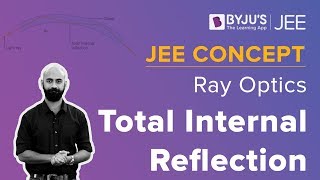
Ray Optics – Important JEE Questions
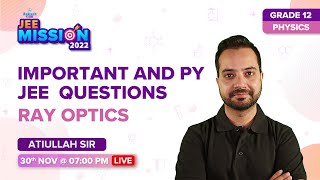
Ray Eyes – Most Important Topics
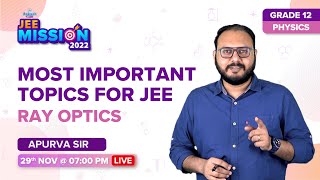
Ray Eyes – Prism
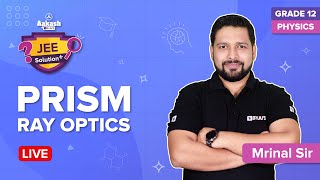
Ray Eyes – Refraction through Lens
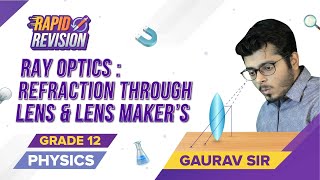
Ray Optics – Lens combination
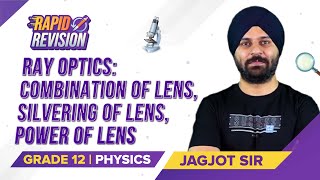
Ray Optics – Refraction Through Spherical Surface
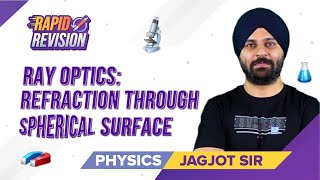
Lens Maker's Formula
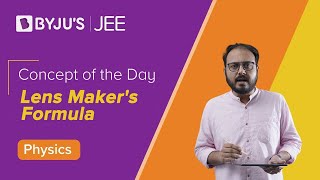
Frequently Asked Questions on Epitome Germination in Concave Mirror
What are the uses of the concave mirrors in daily life?
The concave mirrors are used in torches, telescopes, head mirrors, solar furnaces, headlights etc.
What type of images are formed by a concave mirror?
Both existent and virtual images are formed by the concave mirrors.
Is the focal length of the concave mirror positive or negative.
The focal length of the concave mirror is negative.
What is a concave mirror?
The concave mirror has a reflecting surface bent inwards.
A Concave Mirror Will Produce,
Source: https://byjus.com/jee/concave-mirror-image-formation/
Posted by: blythesolish.blogspot.com


0 Response to "A Concave Mirror Will Produce"
Post a Comment